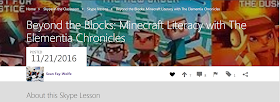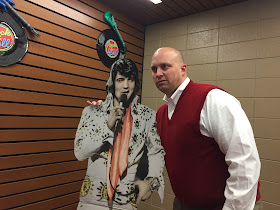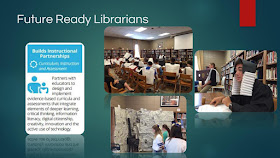Microsoft Educator Community
The links and resources that Iro shared with me are located on the Microsoft Educator Community website. If you haven't visited this site before, you are missing out on some great opportunities. I'm so glad Iro reminded me of this resource in our Skype session. I get so busy in my job that I forget to check it for the latest offerings. For this article, I will focus on activities that feature Skype in the Classroom. It has been so powerful to help teachers connect their students to classrooms all over the nation and world!
Skype in the Classroom
From the Microsoft Educator Community page, you will notice that there are many resources listed on the left side of the screen. If you select Skype in the Classroom, you will be taken to their community page. Here you will find links to Virtual Field Trips, Skype Lessons, Skype Collaborations, Mystery Skype, and Guest Speakers. In our connection, Iro shared that February would be their Literacy Month and I immediately wanted to know more!
Virtual Valentines 2017
One of the current Skype Collaborations Iro told me about is called Virtual Valentines 2017: Melting the Miles between Classrooms. This seasonal event allows students to learn about geography while sharing Virtual Valentines or even connecting via Skype with a partner school! You can find this collaboration and many more in the Skype Collaboration portion of the site.
Read Across America
Iro also showed me a link in the Skype Collaboration area that focused on the upcoming Read Across America event on March 2, 2017. This is a great opportunity to connect classrooms all over the United States to celebrate literacy. In 2016, one of our seniors read a Dr. Seuss book to students in another state for this event! That student still talks about her experience, and she has been an alumnus for nearly a year!
Skype Lessons
A few of the most interesting Skype possibilities that Iro shared with me were Skype Lessons. The first was called Beyond the Blocks: Minecraft Literacy with The Elementia Chronicles. This lesson is a Skype connection with author, Sean Fay-Wolfe. Educators can simply select the "Register for this Skype Lesson" link at the bottom of the page and then view the presenter's available times for a connection.
Did you know that there are webinars and courses on the Microsoft Educator community site? Iro shared a few Skype webinars with me on the page so I could show our teachers. A great beginning Skype course you might consider showing educators is Introduction to Skype in the Classroom. I also was interested in the webinar called Getting Started With Mystery Skype.
Conclusion
I'm so glad that Iro reached out to me to share these great resources for our learning community. Connecting students is so important as we work to help them prepare for the future. Using these tools will help you and your teachers connect with other schools and places. One of the questions I always get from teacher librarians is "how do you find schools to do Mystery Skype?" Up until now, I have relied on my Twitter PLN. This site makes it easier by having one place to find classes to connect.
 |
| Thank you, Iro! |
I hope you will consider using Skype to connect your library (or classroom) and students to the world. If you don't feel comfortable with Mystery Skype, try a virtual field trip or guest speaker. If you try just one, your students and teachers will want more!
Our First Mystery Skype in the Library.
Cool Connections in October 2016!
My table of contents for the blog is here!
Cool Connections in October 2016!
My table of contents for the blog is here!
I have a monthly email newsletter for the subscribers of the Library Media Tech Talk blog. If you are interested in exclusive content not appearing on the blog, be sure to subscribe by submitting your email address! Subscribe here!






















